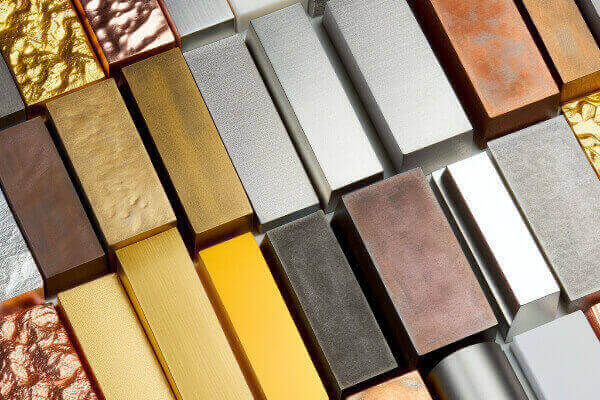
Brass has played a significant role in the development of human civilisation. Its history dates back to ancient Mesopotamia in the second millennium BC, when metalworkers used it to make coins, ornaments and copper-zinc alloys. Today, modern industry relies on brass for its decorative and functional properties. Brass metal is widely used and available in various grades with different characteristics. Its machinability, beauty, strength and corrosion resistance make it popular in a wide range of industries. It is therefore important to understand the different types of brass material to determine the right one for your project. Let us give you a detailed introduction to brass metal to help you get the job done. The advantages, disadvantages, applications and comparisons of brass that we provide here will also help you make the best choice.
Brass is a metal alloy consisting of copper and zinc, together with elements such as iron and lead. In general, brass is 66% copper and 34% zinc. Brass alloys with a higher copper content tend to be softer and look more like gold. Brass alloys with a lower copper and higher zinc content are harder and look more like silver. However, you can vary the ratio of copper to zinc in brass to create different shades and mechanical, chemical and electrical properties.
There are many different grades and types of brass because the proportions of copper and zinc elements are varied to achieve the specific properties of the brass material. The addition of other alloying elements such as aluminium, tin and manganese also helps to change the properties of this metal. The following are the most common types of brass:
Alpha Brass is a single phase alloy with a composition of 35-45% zinc and 55-65% copper. Its crystal structure is face centred cubic or FCC. The ductility of alpha brasses gives them excellent cold working properties. They are widely used for forming and drawing and have good corrosion resistance. The addition of small amounts of iron, aluminium and silicon can improve the mechanical properties of these alloys and harden them by cold working.
Alpha Brass has many advantages, most notably its excellent corrosion resistance, good cold working properties and attractive appearance. People often use it for architectural and decorative purposes because of its bright color and ability to retain a polished lustre.
High zinc beta brasses are approximately 15% copper and 85% zinc. They have a single phase structure and a BCC crystal structure. These brasses are primarily used for die casting because of their high fluidity and low melting point. Heat treatment can strengthen them, and they possess good wear resistance. However, they are more susceptible to stress corrosion cracking than other types of brass.
High zinc beta brasses are popular because they are less expensive than other forms of brass and have excellent castability and wear resistance. They are often used to make die castings, including fasteners, hinges and locks.
Alpha-beta or duplex brasses contain approximately 55-60% copper and 35-45% zinc. They are composed of alpha and beta phases. Duplex brasses have higher strength, hardness and low cold ductility compared to alpha brasses. However, alpha-beta brasses are less expensive than alpha brasses due to their higher zinc content. The higher zinc content in these brasses makes them suitable for hot working.
Alpha-beta brasses are brighter than alpha brasses and have the highest strength at 45% zinc content. Typical applications for these brasses include architectural profiles, radiator valves, hinges, gas appliances, taps and pipe fittings.
Are you looking for a reputable partner for your parts fabrication and machining projects? Look no further. At PROTO MFG, we specialize in CNC machining and related technologies, including sheet metal fabrication, rapid prototyping, etc. Whether it is a project with a simple design or parts with complex geometries, do not hesitate to contact us today!